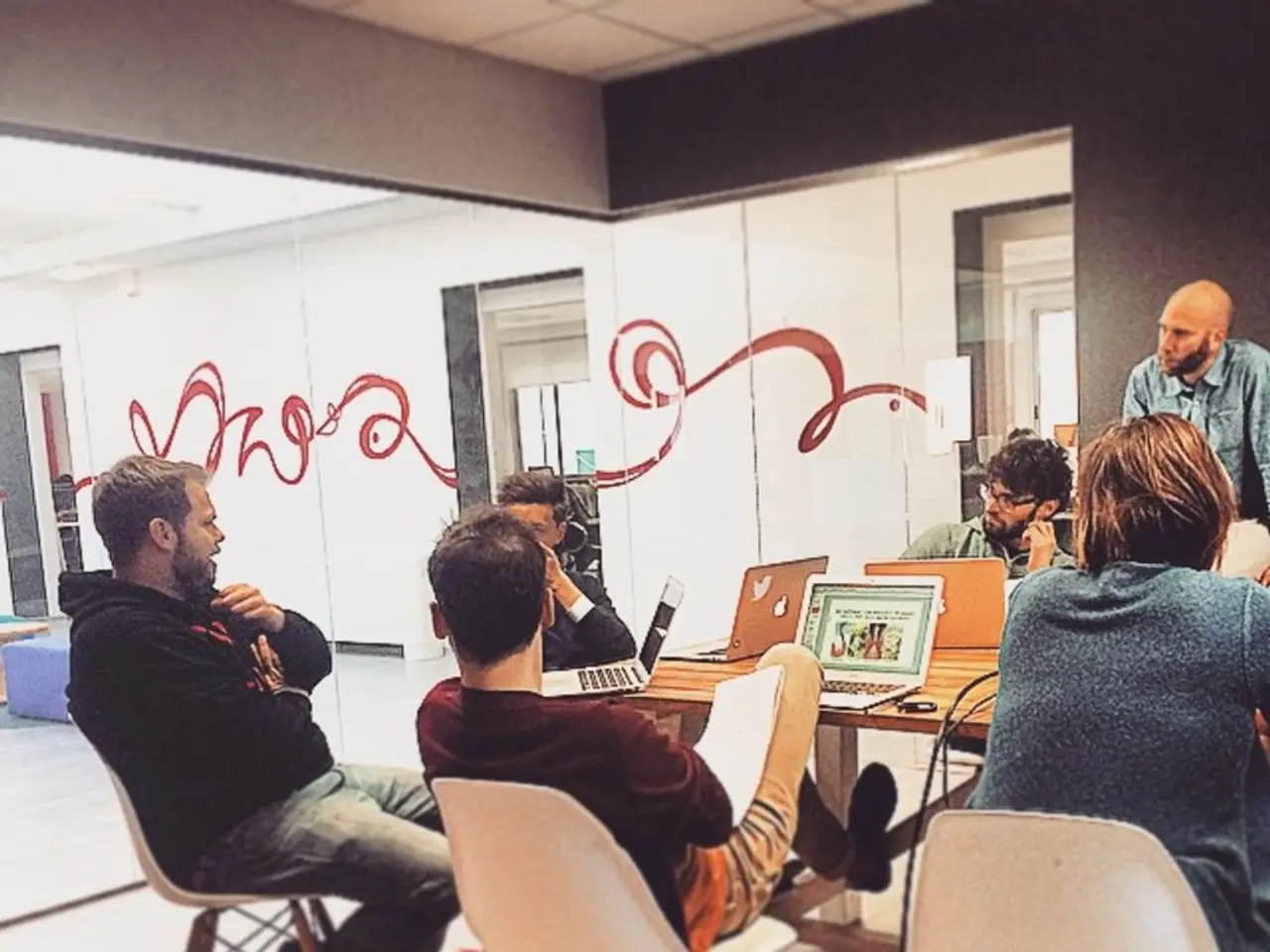Crafting Tasks that Engender Employee Satisfaction
In an era where employee retention and motivation are paramount, smart organizations are turning their focus towards redesigning work around the employees' love for the content of their work. This approach, which emphasizes intrinsic motivation, can significantly improve retention and motivation levels.
To create a work environment where everyone finds love in their work, companies can implement several strategies.
**Foster Meaningful and Engaging Work**
Promoting skill variety and task identity are key to keeping work interesting and meaningful. Design roles that allow employees to use and develop a range of skills, and assign projects with clear beginnings and endings to enable employees to see the impact of their work. Offering challenging assignments that encourage intellectual stimulation can also help employees achieve a 'flow' state, leading to deep satisfaction.
**Build a Supportive and Transparent Culture**
Communication is crucial in building a supportive and transparent culture. Regular updates, one-on-one meetings, and employee surveys create trust and ensure employees feel heard and involved in organizational developments. Empowering employees by giving them autonomy over how they accomplish their work also fosters a sense of ownership and engagement.
**Recognize and Value Contributions**
Regular, genuine recognition of employees' efforts, especially for those in less visible roles, can boost morale, trust, and reinforce the connection between effort and impact. Aligning individual and organizational goals during the onboarding process can foster a sense of belonging and purpose from the outset. Regularly asking employees what motivates them, what frustrates them, and how their work could be improved can provide valuable insights for personalizing motivation strategies.
**Encourage Growth and Learning**
Providing ongoing learning opportunities, such as training, workshops, and mentorship programs, can encourage loyalty and support career growth. Setting clear, achievable goals can also motivate employees, and holding leaders accountable for these goals ensures continuous improvement.
**Cultivate Relationships and Community**
Fostering team connections and a sense of community is essential, especially in hybrid or distributed teams. Encouraging collaboration and creating opportunities for employees to connect beyond task execution can help reduce isolation and increase retention. Using technology platforms to create a sense of community can enable employees to share ideas, celebrate successes, and support each other.
By designing work that is meaningful, challenging, and recognized—while supporting growth and community—companies can tap into employees' intrinsic motivation, leading to higher retention and sustained engagement. Organizations should avoid talent hoarding and encourage mobility among top performers. They should also have alumni programs to maintain connections with former employees and encourage referrals.
However, it's important to note that employee compensation is a complex subject, including regular salary and performance-based incentives or rewards. A survey by ASPRI revealed that only 18% of employees feel engaged, 17% feel resilient, 14% trust their seniors, and 71% of employees experience workplace stress. Approximately 25% of employees have left their jobs due to the return-to-office mandate.
In a hybrid workplace, performance reviews should be impartially conducted to avoid bias. Top performers should be encouraged to move around the company for effective development initiatives. Companies should pay attention to individuals and empower team leaders to provide frequent individualized attention. Each employee is unique, and companies are encouraged to empower teams and individuals to make the most of their unique skills and work styles.
Trusting employees to set their own goals can build trust within organizations. Companies should avoid standardization in roles and feedback, focusing instead on measuring outcomes based on individual competencies. Moving top performers into different roles is a development initiative that companies must undertake.
Companies are offering incentives like pay raises, flexible work hours, and bonuses to retain employees, but with little success. Employees are the primary focus for these organizations, with a human-centric recruitment approach and commitment to lifelong learning. Building a trait of mobility is beneficial for both the organization and the individual.
- Smart organizations can foster personal-growth by offering education-and-self-development opportunities, such as training, workshops, and mentorship programs, to encourage loyalty and support career advancements.
- To cultivate relationships and community, companies can promote team connections and a sense of belonging, fostering collaboration beyond task execution and using technology platforms to create a supportive network where employees can share ideas, celebrate successes, and offer support to each other.
- A human-centric recruitment approach prioritizing lifestyle, focusing on redesigning work around the employees' love for the content of their work, and offering careers that provide meaningful tasks, incentives, and opportunities for growth can significantly improve employee retention and motivation levels in business.




